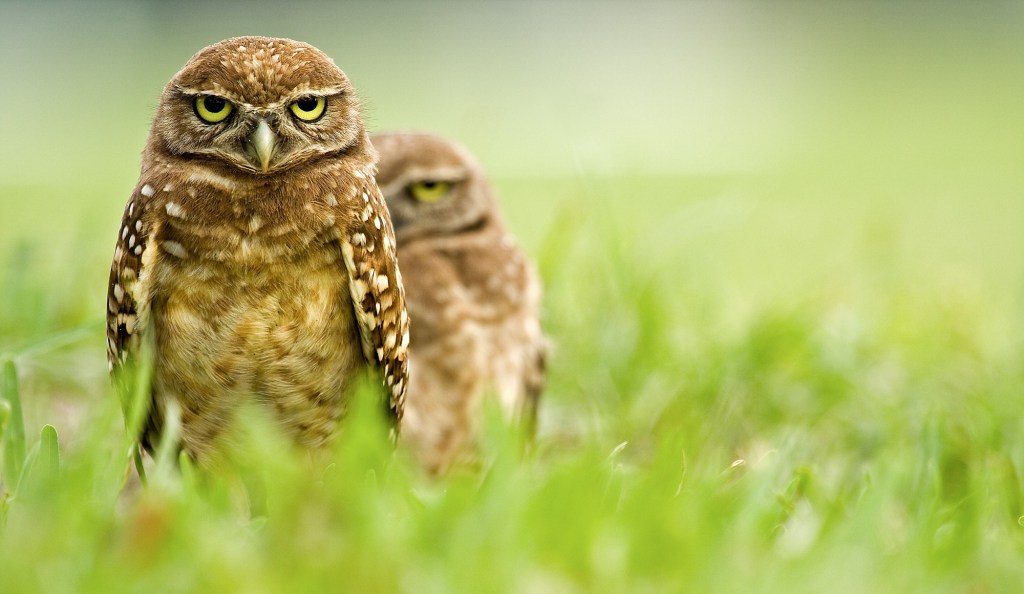We crouched down, watching the little owls from a couple feet away. They seemed slightly perturbed but made no move to fly away or disappear down a hole.
Burrowing owls. I suffered a bit of that disorientation that can come when you’re traveling and witness the familiar in the wrong place. I have spent some time looking for burrowing owls around my home in Idaho. I see them in the high desert. Sagebrush country, dry and dusty.
Here I was on the flooded grasslands of Colombia, a land of capybaras and anteaters.
Burrowing owls were everywhere.
This was years ago, my first global assignment for The Nature Conservancy. I spent a month in Colombia, working with staff to help communicate their conservation programs to funders and TNC members. I spent a week of that time exploring Los Llanos, a seemingly endless grassland populated with scattered cattle ranchers.
Those ranchers had suffered a period of horrific violence, never knowing when a paramilitary group might show up and kill them and their families. It happened to friends. They told the stories as if sharing the morning’s news. Matter of fact. The violence hung over everything but still, one rancher told me, they had all this. He gestured around, to the endless skies and flocks of waterfowl and herds of capybara.
Those ranchers were keen to share that, taking us horseback riding across the grasslands that stretched to the sky. It was, perhaps, the flattest land I had ever seen, perfect for someone possessing my dubious riding skills.
Within minutes of my first horseback ride, we saw the burrowing owls. I did a double-take. Got off my horse. I love owls and perhaps none is as charismatic as this species. They have those big eyes that make them impossibly cute. But, if you’ll forgive the anthropomorphism, they always look a bit pissed off. Which might make them even cuter.

We had been in Los Llanos several days when we visited another rancher, and she too wanted to show us owls. Her ranch had more owls than you might think possible. We crept close. A grin spread on her face. We watched them from just a couple feet away. Fearless. Much like the rancher herself, it turns out.
When she was a girl, growing up on Los Llanos, she’d sneak out and catch the burrowing owls by hand. Hold them, examine them, give them a little pat. Set them free. She chuckled at the memory of it. She loved the little owls. She loved this life, out on the open plains where anything seemed possible.
She dreamed of having a ranch of her own. It turns out, anything was not possible. She was a girl. Girls don’t become ranchers; they marry them.
So she did. The morning after the wedding, her rancher-husband saddled up a horse and rode off across the horizon, disappearing into the flat, flat landscape. Come dinner, he had not returned. So she walked out across the grass to the nearest tree, climbed it and looked. No husband.
For 3 weeks, she repeated the ritual, climbing the tree, scanning. Overcome with dread and worry. Heartsick.

And then he was back. Bloodshot eyes and reeking of booze. He’d been partying. For three weeks. I do not need to tell you that this is not an awesome way to start a marriage.
He made the expected promises and apologies, then did it again. And again. Drinking, gambling, cockfighting, carousing. Multiple affairs. If there was a vice, there was a good chance he took it to excess.
You can imagine: Her despair, her helplessness. She was not one to dwell on such things. She was a child of these plains. One morning, riding out on the ranch, checking on the cattle and the owls, it struck her. She would have her ranch, after all. This was hers now. Anything was possible again.
She got to work, established a prosperous ranch, expanded it. She persevered as the region was embroiled in conflict among a confusing mix of ultra-violent people, the FARC and paramilitaries and narcos. She worked hard, controlled what she could. Did things her way.

She cared about the wildlife and the health of the land. She still delighted, like a child, in sneaking up on the animals. She was a naturalist, knew the habits of the critters. She showed us a tamandua, a species of tree-climbing anteater. We watched endemic Orinoco geese. And we stopped for owls.
Later, we also stopped to meet her husband. Her ranch was profitable and she wanted to keep it that way. She built him a cockfighting ring and facility, so she could keep an eye and exert some measure of control over his various addictions.
He padded around, admiring his fighting roosters. If she had any rancor towards him, it didn’t show. To her, she had it all. She had a ranch and that grass that reached out to the sky. Days on horseback doing what she loved. Cattle and capybaras, big meals on the veranda as the sun set. She had owls.




Join the Discussion